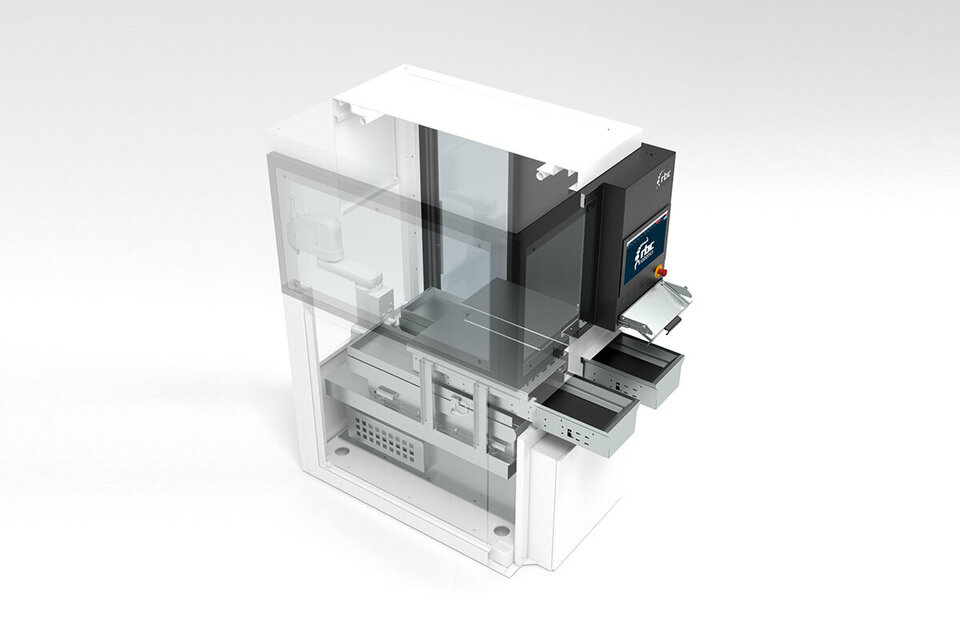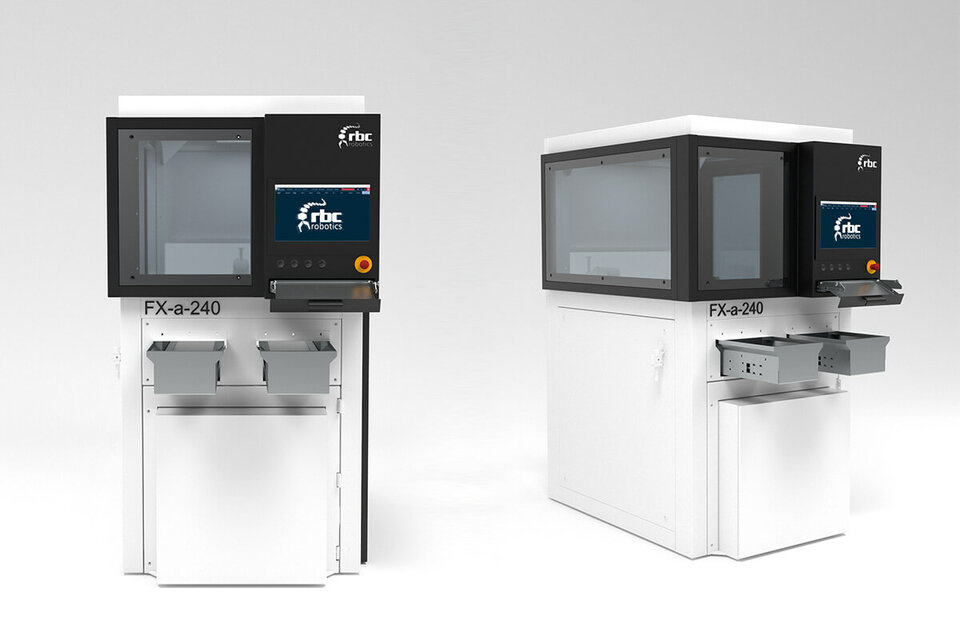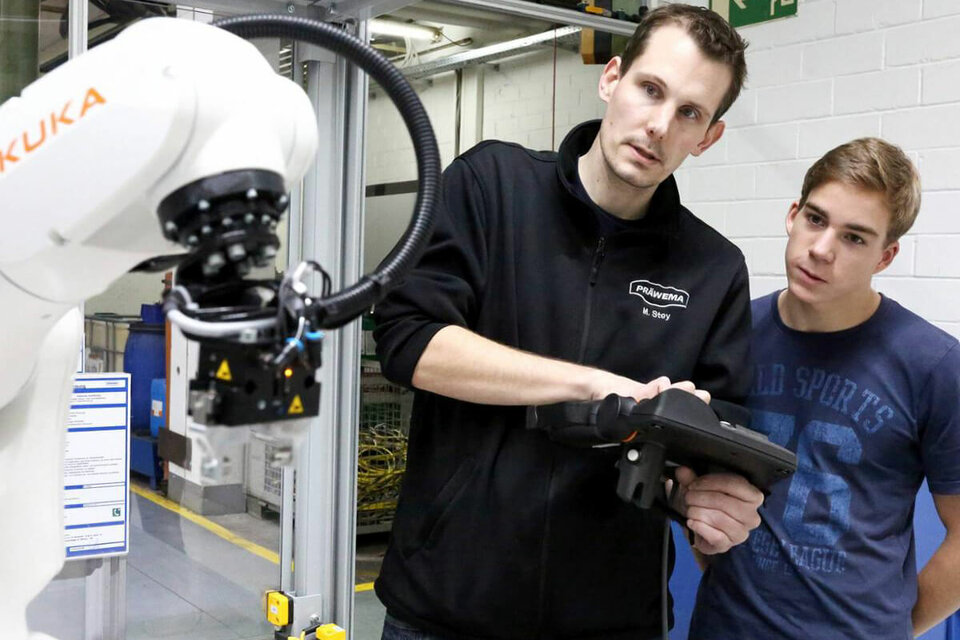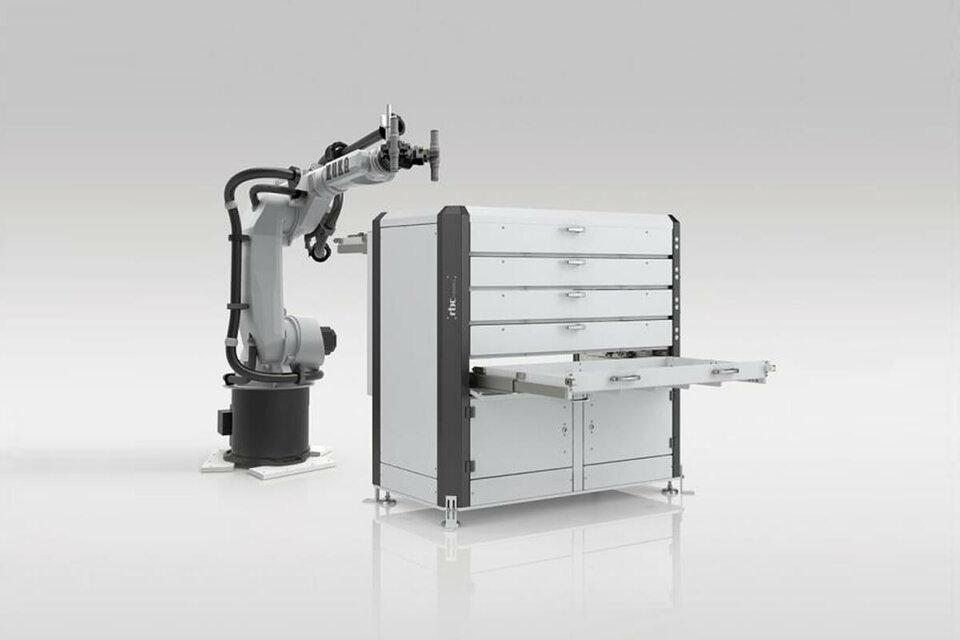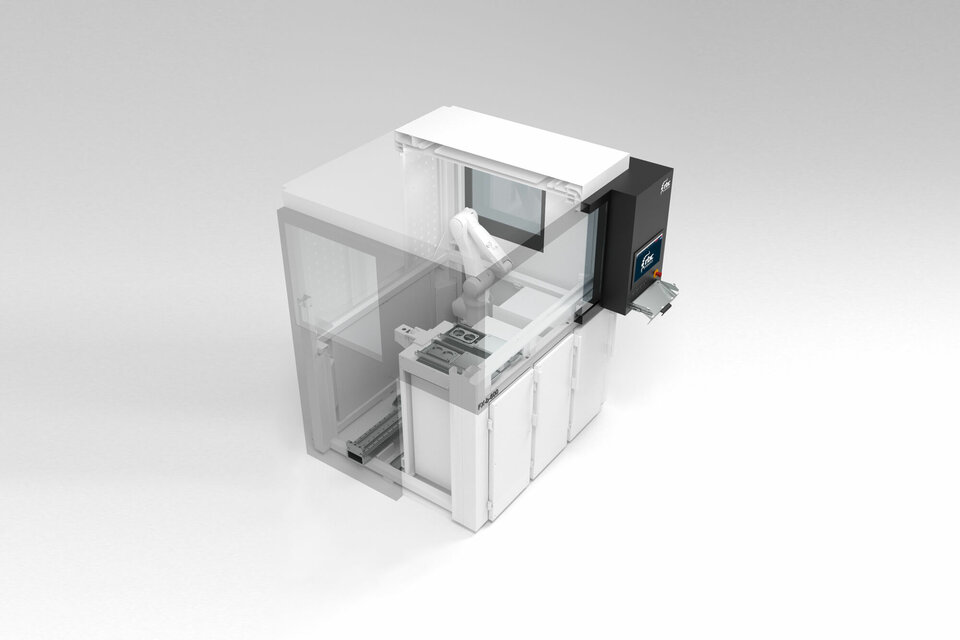When it comes to feeding components in production lines or in machining processes, rbc robotics GmbH is in its element. For almost 15 years, this task has been the focus of the Bad Camberg-based company. The resulting solutions are always intelligent and camera-based, because seeing robots ensure more stable production processes.
The year 2020 was all about the FX series and for this reason the automation specialists have redesigned some feeder modules - such as the FXa 240 module, which can feed components in high-speed mode.
The feeding of components into production lines is very time-consuming for humans and harbors many sources of error, such as the mix-up of components, incomplete loading or incorrectly positioned components. This leads to disruptions in the further process and ultimately even to cost-intensive downtimes. The FXa 240 module increases the overall speed of the infeed enormously and also completely eliminates such sources of error. In addition, manpower requirements are significantly reduced, which increases the economic incentive enormously.
With this feeding module, the operator fills the parts in light, manageable portions into a material accumulator. The supply of parts is so high that the cell can operate self-sufficiently with them - from 30 minutes (bridging break times) to several hours, depending on the design of the storage chute.
The material accumulator then guides the components via a belt conveyor or vibration chutes to the camera field in front of the robot. On the camera field, the components are detected using 2D image recognition or 3D sensors. This is where the geometry of the component gripper comes into play. Depending on where the components may be gripped, this must of course be possible without collisions. There are also requirements as to which feature must be up or down. If the component is the wrong way up, it is moved accordingly on the camera field. The movements are freely programmable and so the components are moved apart, shaken or flipped on the camera field as if by magic. These motion profiles can be very finely tuned, enabling very gentle feeding with relatively constant feeding rates.
The component spectrum can be very diverse here and cylindrical or spherical geometries can also be fed very well. The geometry is taken into account by the design of the camera field, which undergoes design adjustments.
Compared to conventional feeding technology using sorting pots or step conveyors, the technology used has the advantage that no effort is required in setting up mechanical components. Once taught, a component can be changed at the push of a button, provided that the robot's component gripper fits. In practice, this is usually the case, since the component families have very similar main dimensions.
This system cannot do without intelligence, because the interaction between position detection, collision control, gripping by means of robots and subsequent conveying makes this application very demanding in terms of design.
Without a powerful 2D vision system with sophisticated interfaces to the robot and the feeding system, this type of component provision is only possible to a limited extent.
For example, the occupancy of the camera field is evaluated in the system and can thus request the appropriate quantity of components from the material store. This is not done rigidly, but by taking into account the component characteristics. It is precisely this experience that rbc robotics has gathered in countless projects and incorporated into the FX series.
With a footprint of 2m x 1.2m, this feeder module is designed for a minimum footprint. The industrial robot as the main actor is of course integrated in the module. Fast Scararobots or even six-axis jointed-arm robots with payloads of up to 6 kg are used here. Each module has a separate Siemens S7 1500 series controller which, in combination with the respective robot controller, provides optimum connectivity to the production line. The control cabinets are always firmly connected to the cell and are an integral part. With minimal dimensions of the overall cell, the size of the control cabinets now plays a significant role. The cell's HMI consists of a 15-inch touch panel, a foldable keypad, and four freely assignable illuminated keys. The cell's access door can be on the left or right. The modules can be arranged in a row as a duo, saving even more floor space. Access to the control cabinet is from the rear of the cell.
Chaotic parts layer or set
As a further variant, components can be fed into the cell either as bulk material or as set components. This extends the range of applications, and a combination of both systems also allows more sensitive components to be fed. The dimensions of the cell remain unaffected.
The benefits for the operator are obvious; smooth, precise and reliable component feeding with a zero-error rate every second, with minimal space requirements. Designed as a transportable module in a modern design and fit for the requirements of today and tomorrow.


